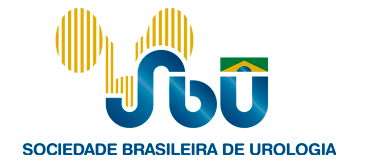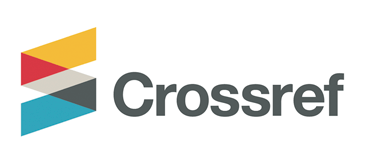Priapism: what every non-urologist should know about?
DOI:
https://doi.org/10.55825/recet.sbu.0166Palavras-chave:
non-urologist, emergency room, priapism, drainage techniqueResumo
Priapism is an emergency that requires immediate treatment and should be managed by every doctor who works in an emergency room. emergency medicine clinicians may be the first-line providers and should be capable of applying the initial management of priapism. Those providing emergency medical care in low-resource areas should know how to utilize interdisciplinary collaboration with urologists and be familiar with techniques of aspiration, irrigation, phenylephrine injections, and T shunts.
Referências
Papadopoulos I, Kelâmi A. Priapus and priapism. From mythology to medicine. Urology 1988; 32: 385.
Broderick GA, Kadioglu A, Bivalacqua TJ, et al. Priapism: pathogenesis, epidemiology, and management. J Sex Med 2010; 7: 476–500.
Roghmann F, Becker A, Sammon JD, et al. Incidence of priapism in emergency departments in the United States. J Urol 2013; 190: 1275–80.
Cherian J, Rao AR, Thwaini A, et al. Medical and surgical management of priapism. Postgrad Med J 2006; 82: 89.
El-Bahnasawy MS, Dawood A and Farouk A: Low-flow priapism: Risk factors for erectile dysfunction. BJU Int 2002; 89: 285.
Spycher MA and Hauri D: The ultrastructure of the erectile tissue in priapism. J Urol 1986; 135: 142.
Burnett AL, Bivalacqua TJ. Priapism: current principles and practice. Urol Clin North Am 2007; 34: 631.
Dai JC, Franzen DS, Lendvay TS, et al. Perspectives on Priapism Education in Emergency Medicine. J Sex Med 2020; 17: 159.
Bivalacqua TJ, Allen BK, Brock GB, et al. The diagnosis and management of recurrent ischemic priapism, priapism in sickle cell patients, and non-ischemic priapism: an AUA/SMSNA guideline. J Urol 2022; 208: 43-52.
Pryor JP, Hehir M. The management of priapism. Br J Urol 1982; 54: 751.
James Johnson M, Hallerstrom M, Alnajjar HM, et al. Which patients with ischaemic priapism require further investigation for malignancy? Int J Impot Res 2020; 32: 195-200.
Broderick GA, Kadioglu A, Bivalacqua TJ, et al. Priapism: pathogenesis, epidemiology, and management. J Sex Med 2010; 7: 476-500.
Burnett AL, Bivalacqua TJ. Priapism: new concepts in medical and surgical management. Urol Clin North Am 2011; 38: 185-94.
von Stempel C, Zacharakis E, Allen C, et al. Mean velocity and peak systolic velocity can help determine ischaemic and non-ischaemic priapism. Clin Radiol 2017; 72: 9-611 está errado.
Ralph DJ, Borley NC, Allen C, et al. The use of high-resolution magnetic resonance imaging in the management of patients presenting with priapism. BJU Int 2010; 106: 1714-8.
Shigehara K, Namiki M. Clinical Management of Priapism: A Review. World J Mens Health 2016; 34: 1-8.
Ridyard DG, Phillips EA, Vincent W, et al. Use of High-Dose Phenylephrine in the Treatment of Ischemic Priapism: Five-Year Experience at a Single Institution. J Sex Med 2016; 13: 1704.
Da Ros CT., Winckler JA., Busato Jr WF. et al.: Priapismo e seu tratamento. J Bras Urol 1992; 18: 85-7.
Howland RJ, Daignault-Newton S, Blair YA. The 10-year priapism experience: identifying clearer targets for intervention. Transl Androl Urol 2022; 11: 1495-502.
Lue TF, Pescatori ES. Distal cavernosum-glans shunts for ischemic priapism. J Sex Med 2006; 3: 749-52.
Burnett, A.L., et al. Standard operating procedures for priapism. J Sex Med 2013; 10: 180.
Winter, C.C. Cure of idiopathic priapism: new procedure for creating fistula between glans penis and corpora cavernosa. Urology 1976; 8: 389.
Ebbehoj, J. A new operation for priapism. Scand J Plast Reconstr Surg 1974; 8: 241.
Brant, W.O., et al. T-shaped shunt and intracavernous tunneling for prolonged ischemic priapism. J Urol 2009; 181: 1699.
Hanafy, H.M., et al. Ancient Egyptian medicine: contribution to urology. Urology, 1974; 4: 114.
Burnett, A.L., et al. Corporal "snake" maneuver: corporoglanular shunt surgical modification for ischemic priapism. J Sex Med 2009; 6: 1171.
Quackels, R. Treatment of a case of priapism by cavernospongious anastomosis. Acta Urol Belg 1964; 32: 5.
Grayhack, J.T., et al. Venous bypass to control priapism. Invest Urol 1964; 1: 509.
Ralph DJ, Garaffa G, Muneer A, et al. The immediate insertion of a penile prosthesis for acute ischaemic priapism. Eur Urol 2009; 56: 1033-8.
Salem EA, El Aasser O. Management of ischemic priapism by penile prosthesis insertion: prevention of distal erosion. J Urol 2010; 183: 2300-3.
Liu BX, Xin ZC, Zou YH, et al. High-flow priapism: superselective cavernous artery embolization with microcoils. Urology 2008; 72: 571-3.
Kuefer R, Bartsch G Jr, Herkommer K, et al. Changing diagnostic and therapeutic concepts in high-flow priapism. Int J Impot Res 2005; 17: 109.
Downloads
Publicado
Como Citar
Edição
Seção
Licença
Copyright (c) 2023 Recet

Este trabalho está licenciado sob uma licença Creative Commons Attribution-NonCommercial 4.0 International License.









